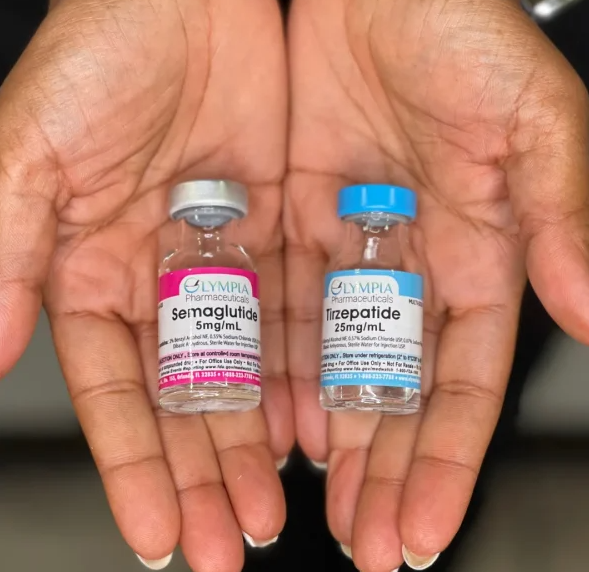Blog Layout
IV Ozone Therapy: Benefits and How It Works
March 13, 2025
Dr. Karen Plymel

In recent years, IV ozone therapy has gained attention for its potential health benefits, particularly in the realm of alternative and integrative medicine. This innovative therapy involves introducing ozone—a
highly reactive form of oxygen—into the bloodstream to promote healing, boost immunity, and improve overall well-being. But how does IV ozone therapy work, and what are its benefits? Let’s explore.
What Is IV Ozone Therapy?
Ozone (O₃) is a naturally occurring gas composed of three oxygen atoms. While ozone is most associated with the Earth's atmosphere, it has been used therapeutically for decades due to its powerful antimicrobial and immune-boosting properties.
IV ozone therapy involves drawing a patient’s blood, mixing it with medical-grade ozone, and reinfusing it into the body. This process, known as major auto-hemotherapy (MAH), allows ozone to interact with the blood, enhancing oxygen utilization and stimulating the body's natural healing processes.
How IV Ozone Therapy Works
1.
Blood Extraction – A small amount of blood is drawn from the patient, typically around 50-250 ml, depending on the treatment protocol.
2.
Ozone Infusion – The extracted blood is mixed with medical-grade ozone, which reacts with the blood components to form ozonide’s and peroxides. These molecules help stimulate biological processes.
3.
Reinfusion – The ozonated blood is then reintroduced into the patient’s bloodstream, allowing the body to absorb and utilize the ozone-enhanced compounds.
This therapy is believed to improve oxygen efficiency, modulate the immune system, and help the body combat infections, inflammation, and oxidative stress.
Benefits of IV Ozone Therapy
1. Boosts Immune Function
Ozone therapy stimulates the immune system by increasing cytokine production. This can help the body fight off infections, viruses, and chronic diseases.
2. Improves Oxygen Utilization
By enhancing oxygen metabolism at the cellular level, IV ozone therapy supports better circulation and overall oxygen delivery to tissues, which is beneficial for people with chronic fatigue, fibromyalgia, and cardiovascular issues.
3. Reduces Inflammation
Chronic inflammation is linked to various diseases, including arthritis, autoimmune disorders, and neurodegenerative conditions. Ozone therapy helps regulate inflammatory responses and may provide relief for inflammatory conditions.
4. Fights Bacteria, Viruses, and Fungi
Ozone has strong antimicrobial properties, making it effective against infections caused by bacteria, viruses, and fungi. Some studies suggest it may help with conditions like Lyme disease, chronic viral infections, and mold toxicity.
5. Supports Detoxification
By stimulating the liver and lymphatic system, ozone therapy can help remove toxins from the body, which is particularly beneficial for individuals exposed to heavy metals or environmental pollutants.
6. Enhances Energy and Mitochondrial Function
Mitochondria, the powerhouses of our cells, play a crucial role in energy production. Ozone therapy helps optimize mitochondrial function, leading to increased energy and reduced fatigue.
7. Aids in Wound Healing and Tissue Regeneration
Ozone therapy has been used in wound healing, particularly for diabetic ulcers and non-healing infections. Its ability to promote circulation and cellular repair makes it valuable in regenerative medicine.
Is IV Ozone Therapy Safe?
When administered by trained professionals, IV ozone therapy is considered safe. However, some individuals may experience mild side effects, such as dizziness, fatigue, or flu-like symptoms, as the body detoxifies. It’s essential to consult with a qualified healthcare provider before starting ozone therapy, especially for individuals with underlying health conditions.
Final Thoughts
IV ozone therapy offers a promising approach to health optimization, with potential benefits ranging from immune support and reduced inflammation to increased energy and detoxification. While more research is needed to fully understand its long-term effects, many individuals report significant improvements in their overall well-being after undergoing treatment.
If you’re considering IV ozone therapy, consult with a knowledgeable healthcare provider to determine whether it’s right for you. As interest in holistic and integrative medicine grows, ozone therapy continues to be a fascinating and evolving field in modern healthcare.

By Dr. Karen Plymel
•
February 8, 2025
The Hidden Dangers of Black Plastic in Your Kitchen Black plastic kitchenware is a common sight in many homes, found in everything from spatulas and tongs to food storage containers. But while these tools may be convenient, they could also be leaching harmful chemicals into your food—especially when exposed to heat. How Black Plastic Puts Your Health at Risk Many black plastic utensils contain flame retardants and other toxic chemicals, which can transfer into your food when used at high temperatures. Stirring a hot pot, scraping the bottom of a pan, or leaving a spatula on a hot stove can all increase the risk of exposure. Research has linked these chemicals to thyroid disease, diabetes, cancer, and reproductive, neurological, and immune system damage. Where Do These Chemicals Come From? A key concern is that some black plastic kitchenware is made from recycled electronics , which can contain flame retardants and other hazardous substances. A 2018 study found that these chemicals can easily transfer into cooking oil, significantly increasing health risks. More recently, a 2024 study revealed that kitchen utensils contain some of the highest levels of flame retardants among tested consumer products. But it’s not just cooking utensils. Black plastic is also used in takeout containers, food trays, and even coffee cup lids , all of which can contribute to chemical and microplastic exposure. Microplastics: An Invisible Threat Beyond chemical exposure, black plastic can also release microplastics—tiny plastic particles that can enter the body through food and beverages. These microscopic particles have been linked to gut health issues, kidney damage, and other long-term health risks. Even if black plastic containers aren’t heated directly, hot food and drinks can still cause chemical and microplastic leaching. Sushi trays, takeout boxes, and plastic lids may all contribute to unintended exposure. How to Reduce Your Risk While completely avoiding plastic might not be realistic, here are some simple steps to limit your exposure to harmful chemicals: ✅ Use wood or metal utensils instead of black plastic for cooking. ✅ Choose glass, stainless steel, or ceramic for food storage. ✅ Cook at home more often to reduce the use of takeout containers. ✅ Drink from a reusable mug instead of using plastic cup lids. The Need for Safer Solutions Despite growing concerns, many black plastic products lack clear labeling about their chemical content. Stronger safety regulations and more transparency in plastic recycling are crucial for protecting consumers from unknown risks. In the meantime, making small changes in your kitchen can help reduce your exposure and protect your health . Have you switched to safer alternatives? Share your thoughts in the comments!

By Karen Plymel, MD
•
January 17, 2025
In the pursuit of a healthier lifestyle, the concept of dietary adherence plays a pivotal role. Many individuals embark on diets with the intention of losing weight or improving their overall health, yet they often encounter challenges that lead to frustration and abandonment of their goals. One of the most significant pitfalls is the tendency to completely cut out favorite foods. However, research suggests that a more flexible approach to dieting can yield better long-term results. The Importance of Dietary Adherence Dietary adherence refers to the extent to which individuals stick to their dietary plans. Studies indicate that the more flexible a diet is, the more likely individuals are to maintain it over time. This flexibility allows for the inclusion of a variety of foods, which can prevent feelings of deprivation. For instance, a study found that participants who included bread in their diets experienced fewer dropouts compared to those who eliminated it entirely. This highlights the importance of allowing for personal preferences within a dietary framework. Flexible Dieting: A Sustainable Approach Flexible dieting is an approach that encourages individuals to enjoy their favorite foods in moderation rather than eliminating them altogether. This method not only fosters a healthier relationship with food but also promotes better adherence to dietary plans. Instead of viewing foods like Oreos, candies, or chocolate as forbidden, individuals can learn to enjoy these treats occasionally while focusing on incorporating more nutritious options into their meals. For example, rather than completely cutting out sweets, one might choose to limit their consumption to special occasions or designate a specific day for indulgence. This strategy can help mitigate cravings and reduce the likelihood of binge eating, which often occurs when people feel deprived. Positive Dietary Changes In addition to allowing for occasional indulgences, making positive dietary changes is crucial for long-term success. This involves focusing on adding healthier foods to one’s diet rather than solely concentrating on what to eliminate. Increasing the intake of vegetables, fruits, whole grains, and lean proteins can significantly enhance overall nutrition. For instance, incorporating a variety of colorful vegetables into meals not only boosts nutrient intake but also adds flavor and visual appeal. Similarly, opting for lean protein sources, such as chicken, fish, or legumes, can help maintain satiety and support muscle health. The Balanced Approach A balanced approach to eating is essential for sustainable dietary adherence. This means including favorite foods in moderation while prioritizing healthier choices. By adopting this mindset, individuals can create a more enjoyable and less restrictive eating plan. For example, someone who loves pizza can enjoy a slice while pairing it with a side salad loaded with vegetables. This not only satisfies cravings but also ensures that the meal is nutritionally balanced. The key is to find harmony between indulgence and health, allowing for enjoyment without compromising overall well-being. The Key to Success In summary, the journey toward healthy eating does not have to be a rigid or punitive experience. The key to a successful diet lies in balance and flexibility. Completely cutting out favorite foods can lead to feelings of deprivation, ultimately resulting in failure to adhere to dietary goals. Instead, focusing on moderation and incorporating healthier options can create a sustainable and enjoyable eating plan. By embracing a flexible approach to dieting, individuals can foster a positive relationship with food, enhance their dietary adherence, and achieve long-term health benefits. Remember, healthy eating is not about perfection; it’s about making informed choices that align with personal preferences and lifestyle. So, indulge occasionally, savor your favorite treats, and prioritize nutritious foods to cultivate a balanced and fulfilling diet.

By Karen Plymel,MD
•
June 17, 2024
Sunscreen is a vital part of any skincare regimen, especially for those concerned with preventing sun damage, photoaging, and skin cancer. With UV radiation being a major contributor to these issues, it's crucial to understand the two primary categories of sunscreen: chemical (organic) and physical (mineral) sunscreens. This article focuses on zinc oxide, a key ingredient in physical sunscreens, and compares its benefits to chemical UV filters and titanium dioxide. The Power of Zinc Oxide Zinc oxide, a mineral-based sunscreen agent, provides broad-spectrum protection against both UVB and UVA rays. Its physical mechanism reflects UV rays, unlike chemical filters that absorb and convert UV radiation into heat. Zinc oxide's non-penetrative nature reduces irritation and the risk of systemic absorption, making it an ideal choice for sensitive skin. Zinc Oxide vs. Chemical Filters While chemical sunscreens use organic compounds to absorb UV radiation, zinc oxide reflects and scatters it, offering superior protection. Zinc oxide also has the advantage of photostability, meaning it remains effective longer compared to some chemical filters that degrade under sun exposure. Furthermore, zinc oxide provides broader protection against UVA rays, including the long-wave UVA that contributes to skin aging and cancer. Why Choose Zinc Oxide? Broad-Spectrum Protection : Blocks both UVA and UVB rays. Stability : Does not break down easily under sun exposure, offering lasting protection. Skin-Friendly : Ideal for all skin types, especially sensitive or acne-prone skin. Eco-Friendly : Zinc oxide is reef-safe, unlike many chemical sunscreens linked to coral bleaching. Final Recommendations Zinc oxide is the best choice for sun protection. Its broad-spectrum efficacy, stability, skin compatibility, and environmental benefits make it superior to chemical filters and titanium dioxide. I strongly recommend incorporating a high-quality, broad-spectrum zinc oxide sunscreen into your daily skincare routine to protect your skin from harmful UV radiation and to ensure healthier skin over time.

February 5, 2024
Explore the differences between conventional medicine, functional medicine, alternative therapies, and naturopathic care to make informed decisions about your healthcare journey. Understand the unique philosophies, practitioners, and treatment modalities to find the best approach for your well-being.
Copyright © 2019 Elevate Health. All Rights Reserved.

